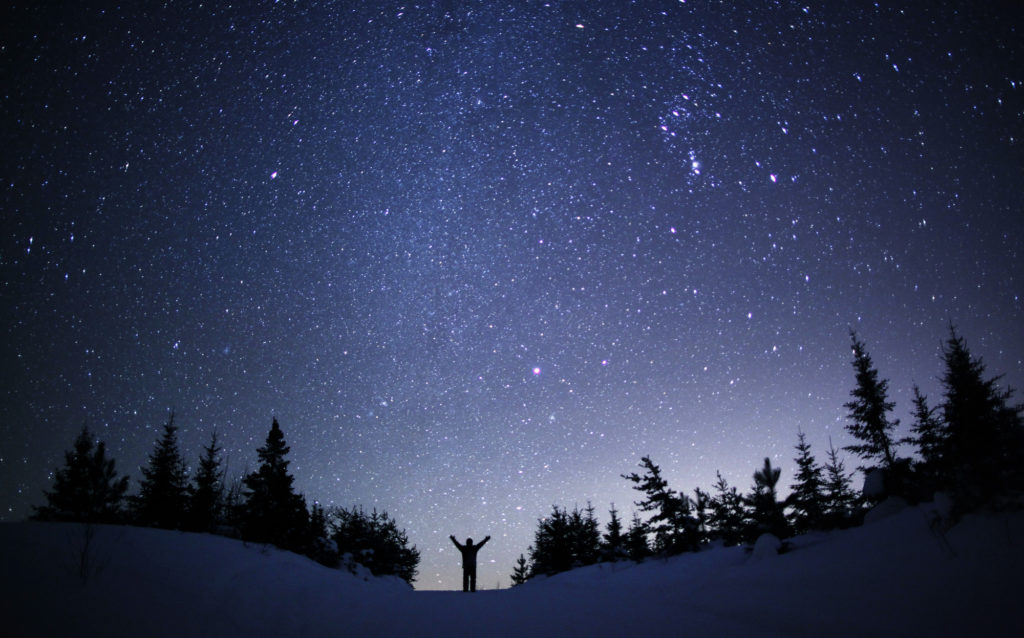Even though it is cold, Winter can be the best time of year for stargazing, because low humidity brings clear skies. The sun goes down early too, so it gets plenty dark to take the kids out before bed time. Bundle up and go outside to see some of the brightest stars and popular constellations.
Let Orion be your guide to the winter night sky. The belt points to some of the brightest stars in the sky and Orion’s sword contains one of the best known and most photographed nebulae in the sky, the Orion Nebula (Messier 42). Follow the line formed by Orion’s Belt to the east to Sirius, the brightest star in the sky. Sirius is in Canis Major, so you have also found another constellation.
Go west of the belt and you will find Aldebaran, the brightest star in the constellation Taurus. It is the 13th brightest star in the sky. Taurus is also home to the star cluster Pleiades or Seven Sisters. To locate these stars, all you have to do is continue the line from Orion’s belt through Aldebaran, then curve it slightly downward. It looks like a tiny dipper. Pleiades is called Subaru in Japan.
The famous Crab Nebula is also in Taurus. It is the bright remnant of a historic supernova observed in 1054. It is directly overhead, but may be difficult to spot without binoculars. You may recall from previous Name a Star posts that both the ancient Chinese and Ancestral Puebloans recorded this supernova, which was brighter than a full moon..
Back to Orion, take a good look at Betelgeuse, the red star in the top left. It’s a supergiant star that is expected to turn into a supernova in the next 100,000 years.
As winter nears a close, there is still plenty to see in February. If you look high in the northwest, you will be able to see the zigzag row of five bright stars forming the constellation of Cassiopeia, the Queen.
The constellation Leo, the Lion, also becomes visible in February. It is more of a spring constellation, but look closely and you will see Leo rising in the east shortly after dark. Look for six stars that form a backward question mark.
Keep Looking Up!

